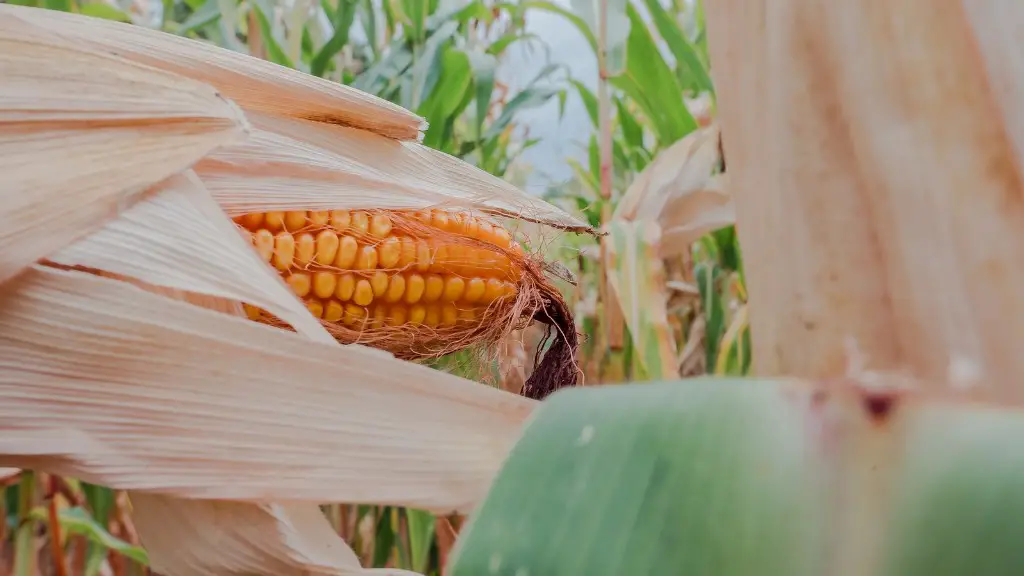Agriculture is a profitable yet risky undertaking. Because of this, producers must employ strategies to minimize risk. Having a stable, risk-reducing plan in place is key to success in the industry. Here are some helpful tips for reducing risk in agriculture:
1. Take advantage of the USDA Risk Management Agency’s programs. These programs are designed to help producers mitigate their risk through crop insurance, risk-reducing loans, and other financial assistance. Utilizing these services can help producers limit their financial losses due to natural disasters, market fluctuations, and other unpredictable occurrences.
2. Utilize proper soil testing. Before planting, producers should test their soil for nutrients, pH levels, and other important factors. Utilizing this data can help guide planting decisions and measure future yield outcomes. By understanding the soil better, producers can limit their losses from poor soil quality and select crops that are more resilient and offer better returns.
3. Follow pest management protocols. Insects, rodents, and other pests can be a costly problem for growers. Following strict pest management protocols can help limit pest destruction and reduce the risk posed by these critters.
4. Utilize budget-based decision making. Without a comprehensive budget, producers can easily find themselves in a financial bind. Utilizing budget-based decision making can help ensure financial security. Having a reliable budget in place can help producers make more informed decisions and avoid economic pitfalls.
5. Invest in proper irrigation systems. Poor irrigation systems can lead to pests, water stress, and other problems. Investing in proper irrigation systems can limit water loss, optimize crop growth, and reduce the risk associated with crop production.
6. Select the right varieties. A crop’s success is largely determined by the variety of seed used. Choosing the right variety for a given climate is key to minimizing farmers’ risks. Using resilient varieties can minimize crop loss and make a big difference in financial returns.
7. Invest in technology and data management systems. Technology and data management systems can help producers make better decisions and stay on top of their operations. Utilizing these systems can provide tangible returns and mitigate risk in the long run.
Utilizing Proper Soil Testing
In order to reduce risk in agriculture, producers should make use of proper soil testing. This test helps to measure the acidity of the soil, its mineral content, the presence of certain organisms, and the optimal amounts of certain nutrients. The data gathered from the soil test enables informed decisions on the quality of the soil and can provide advice on how to adjust for optimal growth. Moreover, the test provides a soil interpretation that helps producers determine which seed variety and planting protocol will best fit their soil.
Using the soil test data, producers can decide in an informed manner on the use of fertilizers and supplemental nutrients, as well as adjust their planting depth to ensure adequate root development. Furthermore, they can be aware of any potential contamination that should be addressed and take steps to prevent soil erosion and drainage issues. All these precautions can reduce the losses caused by any soil-related problems.
By analyzing soil test results and using the data to guide their planting decisions, producers can reduce the risk of damage due to nutrient deficiencies and other crop problems. Producers must conduct soil testing to gain insight into the condition of their soil and ensure they are taking all precautionary steps to protect their investment.
Applying Proper Pest Management Protocols
Producers must also apply proper pest management protocols in order to reduce risk in agriculture. Pests such as rodents and insects cause output damage and the costs of dealing with the infestation can be high. To reduce the risk posed by pests, producers should use a long-term and preventive approach. This includes regular environmental inspection, pest identification and monitoring, preventative treatments, and proper application of chemical pesticides or biological control methods when necessary.
Producers should also employ practices that reduce the chances of having pests and limit the damage they cause if they do appear. For example, rotating crops, planting pest-resistant varieties, and employing proper irrigation procedures are some of the steps producers can take. These practices can minimize infestation and limit the potential harm due to pests.
Moreover, producers should have an emergency management plan ready in case pest infestation happen. This means preparing to act in an efficient and timely manner. With an emergency management plan in place, a producer will be able to respond swiftly in the event of an unforeseen pest attack, thereby reducing their losses.
By understanding the pest threat and employing preventive and emergency protocols, producers can limit their exposure to damage caused by pests, thus reducing their risk.
Making Financial Decisions Based on Budgeting
Producers should also employ proper budgeting and invest in decision-making processes that are based on their budget. Investing in infrastructure, technology, or production inputs without proper budgeting can be financially burdensome and create unforeseen economic losses. Therefore, having a reliable budget in place is essential for balancing production costs and profits.
Producers must evaluate their expenditure carefully. This means considering the opportunity costs associated with each decision and determining if the input costs produce the desired results. When making financial decisions, producers must consider their long-term goals and determine if their investments will help them reach their desired outcome.
Additionally, producers should set a strict budget and avoid overestimating their income. Setting a realistic budget helps producers to prepare for any unexpected events and plan according to their revenue streams. Considering the risks associated with each decision-making process and setting up budget-friendly plans can help producers reduce their risk by limiting their financial losses.
Producers must practice financial responsibility and set a reliable budget in order to minimize their exposure to production risks. Budget-based decision-making allows producers to make decisions with reliable information and eliminate economic losses due to reckless investments.
Investing in Proper Irrigation Systems
Having a proper irrigation system in place is essential for reducing risk in agriculture. Poor irrigation systems not only lead to a loss of revenue due to water waste but can also cause serious pest infestations and yield losses. Poor timing and technique can lead to water stress, crop damage, and a decrease in overall productivity.
By investing in proper irrigation systems, producers can avoid water waste and maximize their crop yield. An irrigation system should be tailored to a producer’s land and climate, and accounts for the soil type, soil moisture levels, temperature, and other environmental factors. Having a reliable system in place can help producers reduce crop losses, eliminate water waste, and save on future costs.
Producers should also practice proper water management. Optimizing their water usage and utilizing strategies to make the most of their water inputs can help producers reduce their environmental impact and make the most of their resources. Producers can also use water-efficiency technologies to reduce their water requirement and minimize their losses.
By investing in a reliable irrigation system and managing their water resources properly, producers can ensure their crops receive the right amount of water and reduce the risk posed by drought and water shortage. Proper irrigation systems are imperative for reducing risk in agriculture.
Selecting the Right Variety of Plants
Selecting the right variety of plants is crucial for reducing risk in agriculture. Different varieties of plants have a different tolerance to pests, disease, and excessive rainfall. By selecting a variety that is resilient to harsh climates, producers can reduce their losses due to natural disasters or sudden weather condition changes.
Furthermore, varieties that produce high yields and good quality can help producers capitalize on current market demands and maximize their returns. Utilizing varieties that are drought-tolerant, pest-resistant, and easy to farm can help producers reduce their losses and earn better profits.
It is also important for producers to be keen on disease and pest outbreaks. Selecting varieties that are resistant to certain diseases, such as virus and fungi, can decrease losses due to infection and significantly increase a producer’s return on investment. Moreover, producers should select varieties that possess a higher tolerance to pests in order to prevent damage and loss of crop.
By understanding their local climate and selecting the right variety, producers can reduce their losses due to crop failure and earn higher yields. Careful selection is essential for reducing risk in agriculture.
Implementing Technology and Data Management Systems
Producers must also invest in technology and data management systems in order to reduce risk in agriculture. Data management systems enable producers to track and store their production data accurately. This data can give producers insight into the quality, yields, and overall productivity of their operations and help them make more informed decisions.
Additionally, producers should utilize technological advances to ensure their operations run smoothly. Having a reliable system and utilizing technology can help producers save on costs, increase their efficiency, and reduce their production losses. Automating certain processes and utilizing data systems to streamline their operations can help producers optimize their production and minimize their exposure to risk.
Finally, producers should use predictive technologies such as weather forecasting and market analysis to anticipate future trends and make better-informed decisions. By leveraging the data provided by these technologies and having a long-term strategy for managing their operations, producers can reduce their risk and optimize their production.
Technology and data management systems are essential for reducing risk in agriculture. Implementing the available technology and utilizing data systems can help producers optimize their operations and make more informed decisions.





